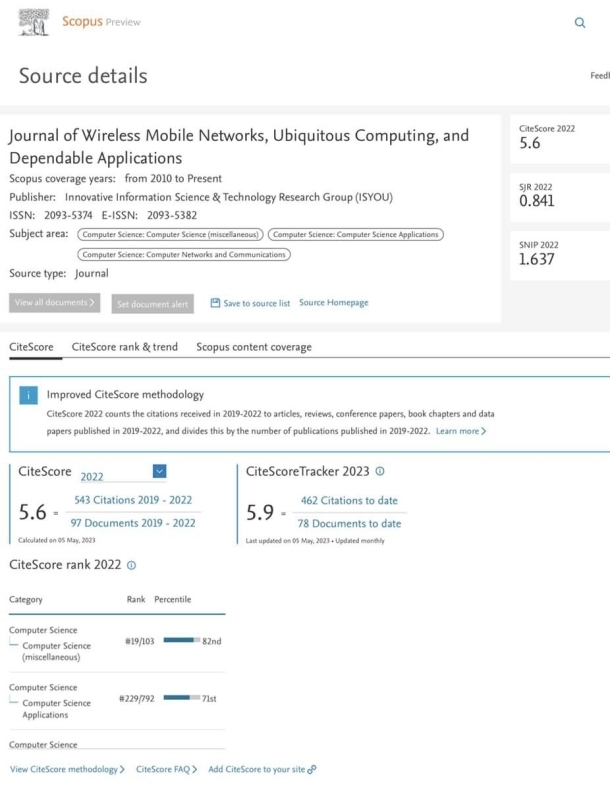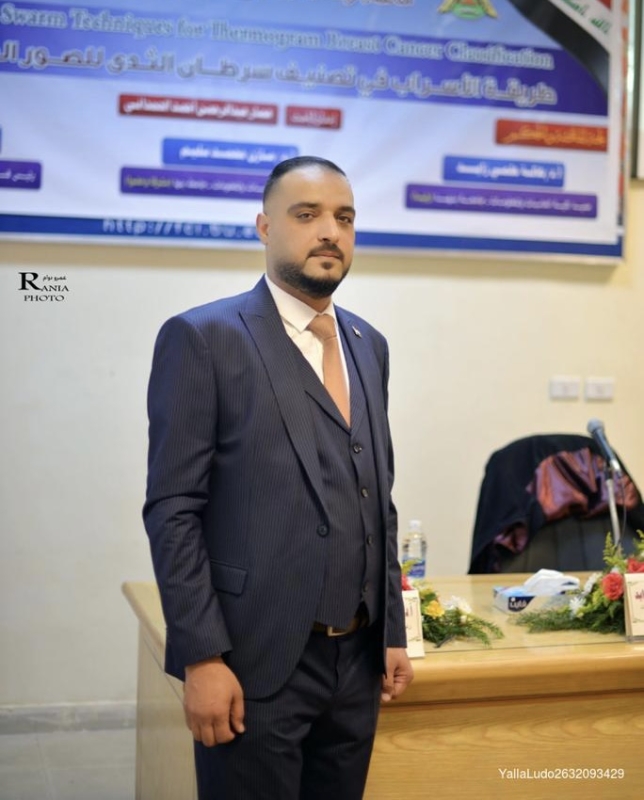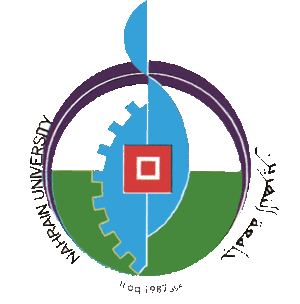
نشر المدرس المساعد عمار عبد الرحمن أحمد التدريسي في جامعة النهرين مسؤول شعبة شؤون الموظفين في قسم شؤون الموارد البشريةوالمالية بحثاً بعنوان:
الحوسبة المرئية المحسّنة الآمنة المستندة إلى إنترنت الأشياء مع تقنيات معالجة الصور والذكاء الاصطناعي للتنبؤ الدقيق بمرض COVID الجديد
Improved Secure IoTs-Based Visual Computing with Image Processing and Artificial Intelligence Techniques for Accurate Predicting of Novel COVID
وهدف البحث الذي نشر ضمن مستوعبات سكوباس بمجلة:
Journal of Wireless Mobile Networks, Ubiquitous Computing, and Dependable Applications (JoWUA)
إلى الكشف عن إن تطور إنترنت الأشياء الآمن (IoTs) لتصبح متطلبًا لأنظمة الرعاية الصحية الإلكترونية في معظم الحالات، تحتوي الصورالصحية على معلومات حساسة عن المرضى والتي يجب حمايتها، ولا يمكن تطبيق التشفير التقليدي بشكل مباشر على بيانات الصورةبسبب القيود المفروضة على سمات البيانات الرقمية، بالإضافة إلى ذلك قد يفقد المرضى سرية بياناتهم عند نقل الصور الخاصة عبرالشبكة، وبالتالي يتم تطبيق الذكاء الاصطناعي ومعالجة الصور للوسائط المتعددة لبناء إنترنت الأشياء الآمن لضمان خدمات صحةإلكترونية دقيقة ومحمية بشكل خاص، هذا ومن الضروري إتباع نهج آمن وخفيف الوزن لاستخراج الإطار الرئيسي. بالإضافة إلى ذلك ،عند مراعاة قيود أنظمة الصحة الإلكترونية في الوقت الفعلي ، قد يكون من الصعب الحفاظ على مستوى كافٍ من الأمن بطريقة معقولة.
هذا وتم اقتراح مخطط تشفير يحتوي على نسخة تجزئة لمولد Blum Blum Shub (BBS) ، وهو Hash-BBS (HBBS) لتحقيق درجة عالية من سلامة وسرية في نقل بيانات صور COVID-19 CT للمرضى، أيضًا يتم تطبيق تقنية الذكاء الاصطناعي لاختبار COVID-19 مثل إعتماد الشبكة العصبية التلافيفية، وأظهر التقييم أن الإطار المقترح تفوق في أدائه على الأمن البديل ومنهجيات التعلم في التنبؤ الآمن. لذلك، يمكن استخدامه لنقل الصور المقطعية بشكل موثوق لمرضى COVID-19 مع تلبية معايير الأمان والتنبؤ الصارمة.
Research Summary
Secure Internet of Things (IoTs) have evolved into a requirement for electronic healthcare systems. In most cases, health images contain sensitive information about patients that must be protected. Traditional encryption cannot be directly applied to image data due to restrictions in digital data attributes. Additionally, patients may lose the confidentiality of their data when private images are transmitted via a network. Thus, multimedia Artificial Intelligence and image processing are applied to build improved secure IoTs. To guarantee accurate and privately protected e-health services, a secure lightweight key frame extraction approach is essential. Additionally, when taking into account the limitations of real-time e-health systems, it can be challenging to establish a satisfactory degree of security in an economical manner. An encryption scheme that contain a hashing version of the Blum Blum Shub (BBS) generator, namely Hash-BBS (HBBS) is suggested and built to achieve a high grade of integrity and confidentiality in transmission data of COVID-19 CT-images for patients. Also, an AI technique is applied for COVID-19 testing such as adopted a convolutional neural network. Evaluation showed that the proposed framework outperformed alternative security and transfer learning methodologies in secure prediction. Therefore, it can be used to reliably transmit CT-images for COVID-19 patients while meeting strict security and prediction benchmarks.

